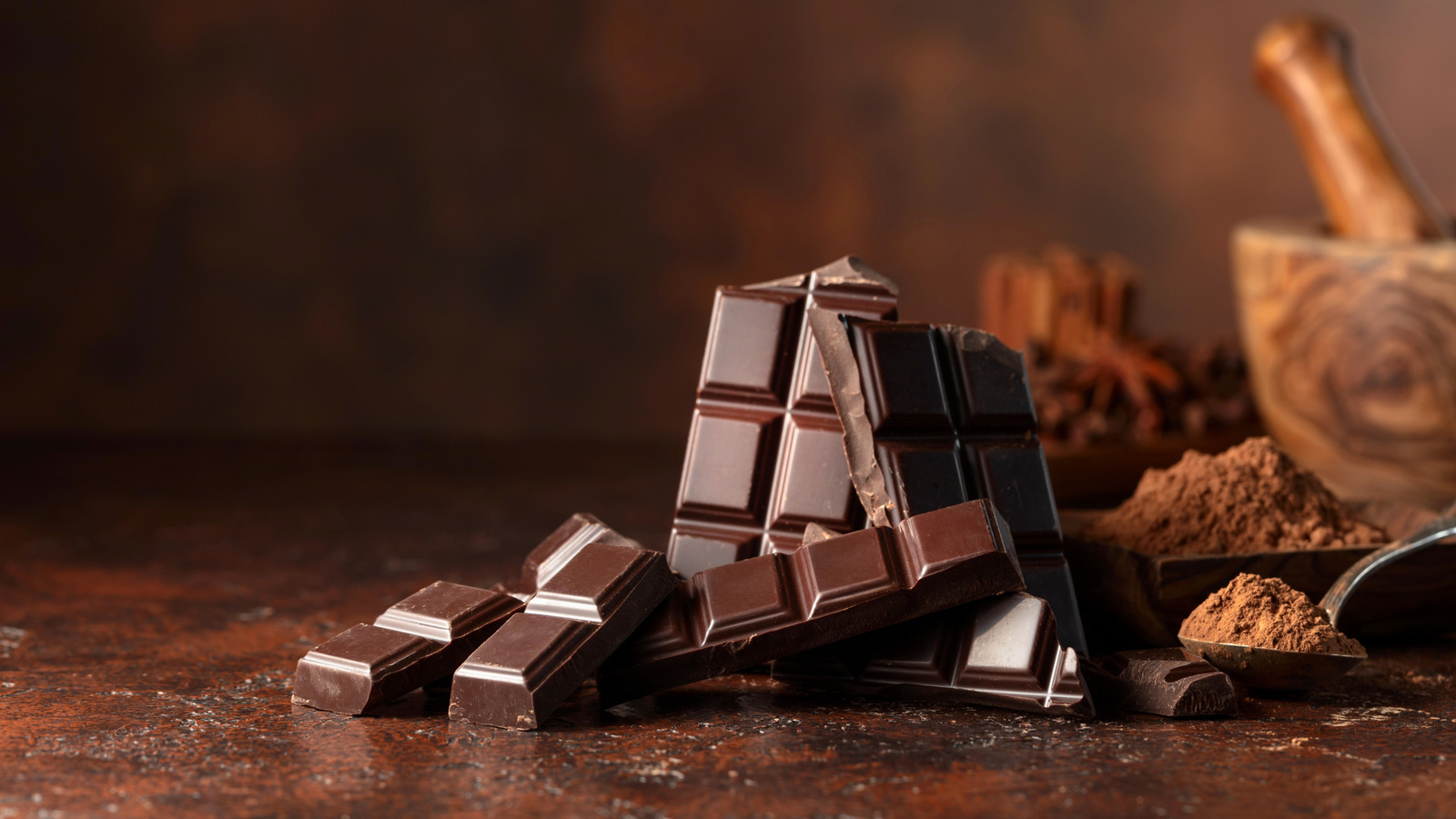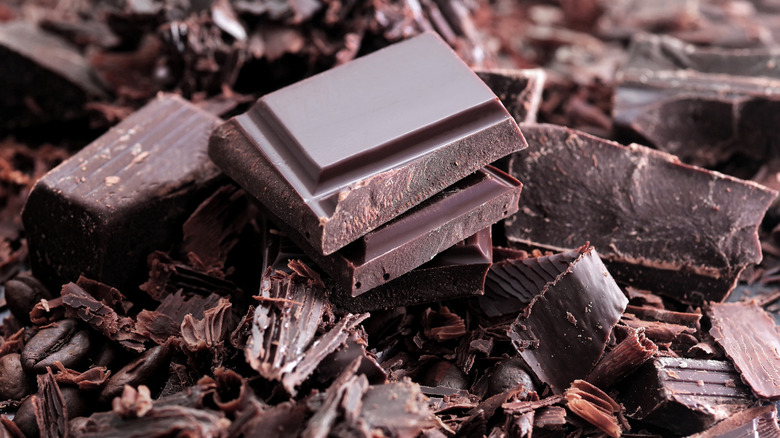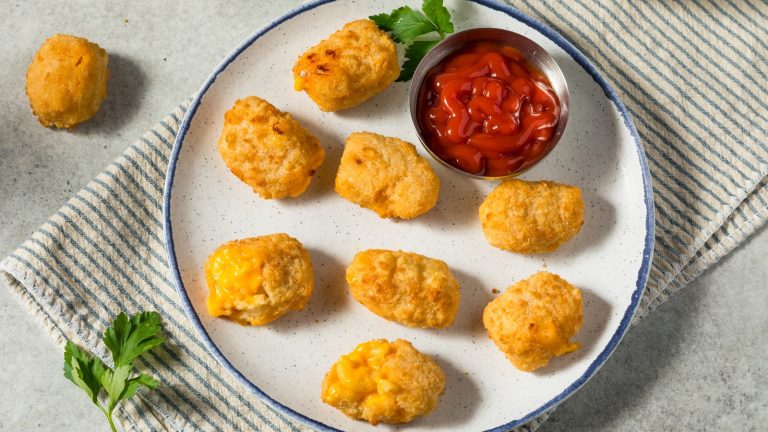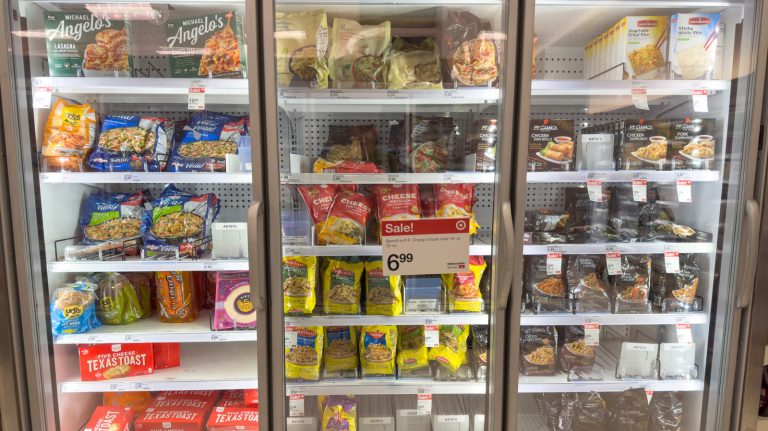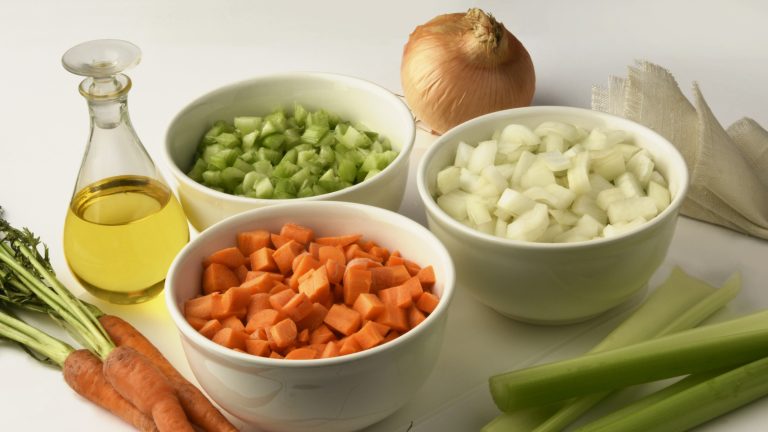Serious cocoa lovers know that chocolate isn’t created equal. Our favorite store-bought chocolate bars are not just the ones with the most unique flavors or prettiest packaging — they tend to be much higher in quality than their below-par counterparts; not only in taste, but in texture and appearance. If you’re shopping around the candy aisle, though, how can you know which chocolate bars impress and which disappoint without tasting them? The answer is simple: Look for some key clues on the label.
For chocolate expertise, Chowhound spoke with Kat from The Baking Explorer, who is familiar with chocolate not only as a baking tool, but as a treat in and of itself. According to Kat, “high-quality chocolate will have a short ingredient list and is made with real cocoa butter.” Great chocolate shouldn’t contain excess additives or impossible-to-pronounce chemicals; in fact, the dark chocolate considered the best in the world only lists two ingredients on its label: Cacao and sugar.
The other tell-tale factor is the chocolate’s cocoa percentage. Kat says, “Look for a cocoa content of around 60% for milk chocolate and 70% or more for dark chocolate.” This percentage should be easily visible on the label. Though U.S. standards only require milk chocolate to have a cocoa percentage of 10%, and you may find dark chocolate products with less than 50% cocoa, a higher percentage of cocoa indicates the purest chocolate essence — no need for cheap additives and sugars.
What sets apart high-quality chocolate?
Higher-quality chocolates may come with a higher price tag, but they also provide an undeniably richer experience. According to Kat, “good-quality chocolate is smooth and velvety. It melts in the mouth with a creamy texture and no grittiness.” Plus, unlike average- or lower-quality chocolate, “it’s not overly sweet, focusing instead on the intense flavor of the cocoa.” Beyond taste and texture, Kat says high-quality chocolate “will have a beautiful shine to it, and will snap when broken into pieces.” It’s no wonder we’d choose that any day over mealy, chewy, or waxy chocolate.
Beyond these quantifiable factors, there are some more intangible qualities that contribute to chocolate’s pedigree, such as where and how it’s made. Many people consider European chocolate superior to American chocolate, largely due to higher regulatory standards and longstanding traditions of chocolate production in certain European countries. Another factor consumers have started paying closer attention to in recent years is ethical sourcing. Concerns over the treatment, compensation, and labor practices of cocoa farmers in developing nations has led to a rise in companies promising more sustainability, fair trade certifications, and even bean-to-bar chocolate production practices. This helps consumers feel good about the goodies they’re eating. Whether you care about taste, texture, luxury aesthetics, or ethical sourcing, there are many reasons to invest in higher-quality chocolate.


